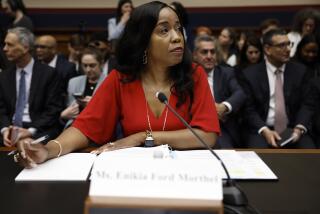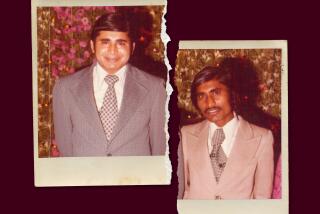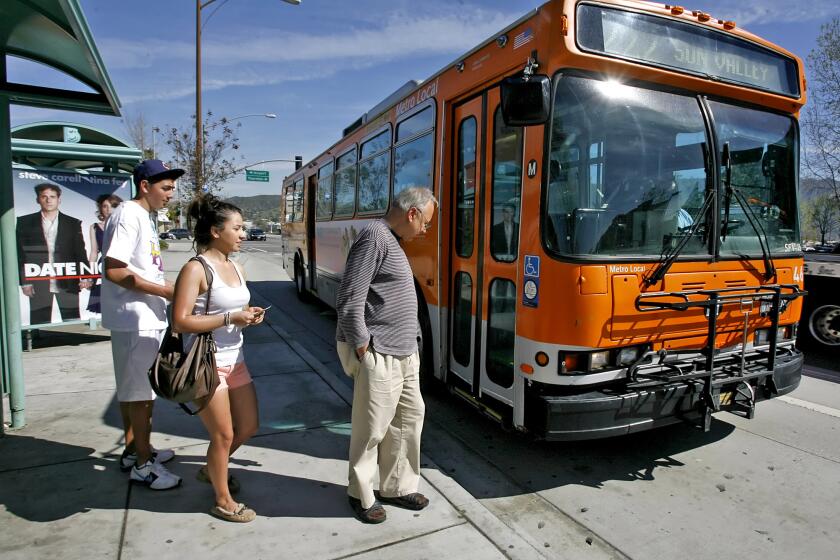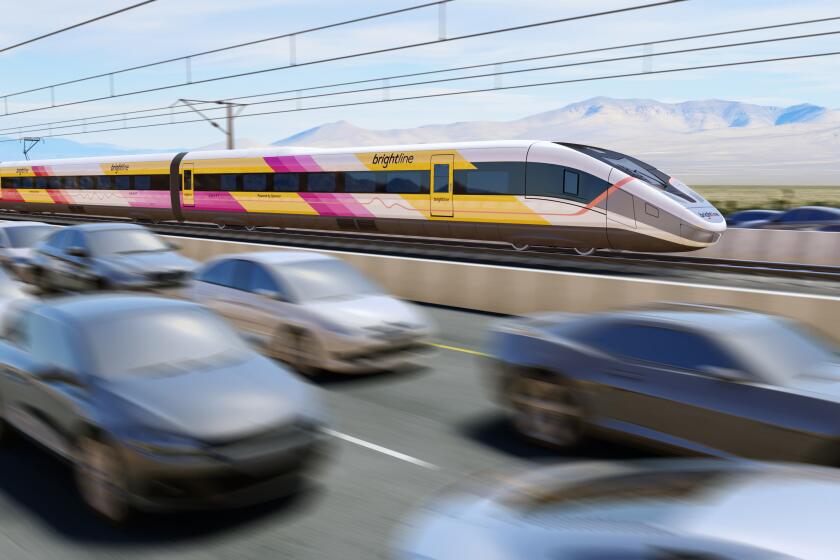Point /Counterpoint : The Issue: A Light-Rail Line for the San Fernando Valley : FOR
In November, the Los Angeles County Transportation Commission halted its study of five proposed light-rail routes for the San Fernando Valley. Commissioners said they would take no action unless local elected officials proposed a consensus route. The Times asked a member and former member of the Transportation Commission to write guest columns on a light-rail line. In favor of such a line is Marcia Mednick, a member appointed by Mayor Tom Bradley and an employee of Vitalize Van Nuys Inc., a private economic development corporation. Writing against it is Roy W. Donley, a retired architect and until recently a member, who was appointed by Supervisor Michael D. Antonovich.
Recently, while sitting in traffic on the Ventura Freeway, I heard a radio commercial that stated: “Standing still is not an option.” That phrase describes our need for rail transit in the San Fernando Valley.
Even if we flew in the face of reason and decided to stand still, areas surrounding us will not. Houses will be built, and their occupants will add to the overload on our streets and freeways. The only alternative is for the San Fernando Valley to grow in ways that will increase our ability to manage growth within our communities. Transportation systems that can move people and reduce our dependence on automobiles are an essential part of our plans and efforts.
This feeling is not universal. Some people have taken the approach that the way to solve our traffic problems is to stifle anything that would allow growth or change, to stop any projects that might provide jobs, entertainment or shopping and, in doing so, reduce the number of trips that people have to make outside of their communities. This is not a responsible or realistic approach. The solution must include a transportation network that will give us the ability to allow for growth in specified parts of the Valley, to curb growth in other parts and to provide mobility for our residents.
Is this transportation network wider streets, ride-sharing, more buses, or a light-rail system? It is actually all of these, and they must be implemented in a coordinated manner. But timing is everything, and rail projects take years to plan and years more to build. Our timing must be geared to financial realities and political considerations in all parts of the county.
In the next few months, we have an opportunity to make progress toward getting rail transit in the San Fernando Valley, and it is an opportunity that must not escape. Under the provisions of Proposition A, 35% of the half-cent sales tax dedicated to transit must be spent for rail construction in Los Angeles County. It cannot be spent for buses, it cannot be spent for freeways. If the Valley acts quickly and responsibly, we can still compete to be the next line to go into construction. If we do not, our sales-tax revenue will be spent for rail construction in other parts of the county, and we will not have an opportunity to compete again until after the year 2000.
Unfortunately, current rail technology is not well understood and probably will not be until 1990, when the Los Angeles-Long Beach line is in service. Modern rail transit has shown itself to be a good neighbor and an effective way of moving people in residential and commercial neighborhoods in dozens of North American cities. It has the flexibility to operate in different modes--at grade or street level, in a tunnel or below grade, or on an elevated structure. The potential exists for the use of a combination of modes that would be cost effective and provide maximized service and minimized community interruption.
Varying Needs
An east-west light-rail line in the San Fernando Valley would serve residents with varying needs. It would connect with Metro Rail in the eastern end of the Valley, allowing residents to commute easily to Hollywood, mid-Wilshire and downtown Los Angeles. As other portions of the 150-mile countywide system are built, we can use rail transit to get to LAX, Santa Monica, Pasadena, El Segundo employment centers and countless intermediate sites. The east-west line can also serve riders staying within the Valley by linking residential, commercial, educational and residential facilities.
A Valley light-rail line will attract riders because it can offer them time savings. Under the slowest of conditions, a rail line operating at grade may average 30 m.p.h. While this may sound slow, it will be rapid compared to the grueling 7 m.p.h. that will prevail on the Ventura Freeway in the year 2000. Rail transit can provide greater mobility for that portion of our population that is dependent on public transit, including our rapidly increasingly numbers of senior citizens. In the North American cities where modern rail lines have been built, the systems’ speed, cleanliness, safety, comfort, accessibility and time savings have attracted riders that had previously shunned public transit.
More Cost-Effective
When it comes to moving large numbers of people, rail transit is cleaner and more cost-effective than buses. A bus carries 70 people; it requires one driver; it pollutes the air and it must share the road with private automobiles. In contrast, a two-car electric rail vehicle with one driver or attendant can accommodate 300 to 400 people without congesting the street system. Our bus systems are heavily subsidized. It is rare for a bus system to recover more than 40% of its operating cost from fare-box revenue.
In contrast, the San Diego light-rail system is generating more than 90% of its operating revenue from the fare box, its ridership is more than 20% higher than projected, and it is a source of civic pride to the city’s residents.
Rail does not mean that all of the Valley will become clones of downtown or Century City. It does not mean that we will all have greater personal mobility and be less dependent on our automobiles. Rail transit is a tool to help the people and the communities of the Valley move into the 21st Century with greater control over our way of living and with improved quality of life.
We cannot stand still! We need rail transit in the San Fernando Valley!
More to Read
Start your day right
Sign up for Essential California for news, features and recommendations from the L.A. Times and beyond in your inbox six days a week.
You may occasionally receive promotional content from the Los Angeles Times.






